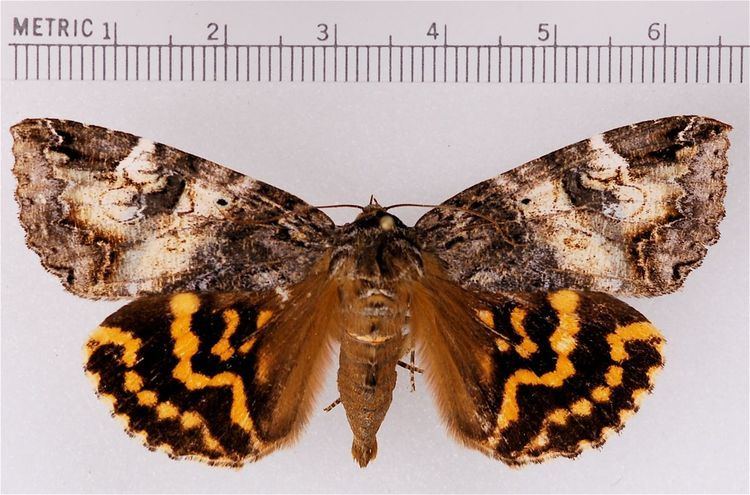Kingdom Animalia Superfamily Noctuoidea Scientific name Euparthenos nubilis Rank Species | Class Insecta Family Erebidae Phylum Arthropoda Order Butterflies and moths | |
 | ||
Genus Euparthenos
Grote, 1876 Similar Butterflies and moths, Zale, Zale undularis, Parallelia bistriaris, Caenurgina crassiuscula | ||
The locust underwing (Euparthenos nubilis) is a species of moth in the Erebidae family and the only member of its genus Euparthenos. The adults resemble some of the underwing moths of genus Catocala, which are fairly close relatives, in color, pattern, and the habit of resting on tree trunks. But E. nubilis can usually be immediately recognized by the 4 concentric black bands per hindwing, as opposed to one or two (at most 3) in Catocala. Color morphs of E. nubilis with altered pattern are known, however, and these may be hard to recognize without detailed examination.
Contents
This moth has light grey forewings with a pattern of darker grey and brown lines and shading. The hindwings are yellow-orange with the aforementioned four black bands each. The wingspan is 56–70 mm (over 2 to almost 3 inches.
The species is found from Maine, Ontario and Quebec, south to northern Florida, west to Nebraska and Arizona. Adults are on wing from April to September. There are two generations per year. The larvae feed on Robinia (locust tree) species, such as Black Locust (Robinia pseudoacacia). The adults like to drink the juice of fermenting fruit, and are attracted to lights.
Classification
The species and genus were previously classified in the Catocalinae subfamily of the Noctuidae family and in the Ophiusini tribe of the Erebidae family.
Subspecies
The species has the following described subspecies.
Synonyms
The junior synonyms of this moth are:
